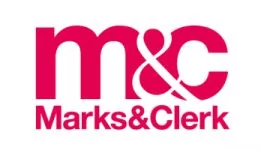- within Immigration topic(s)
London Fashion Week, one of the "big four" in the world of fashion, descends on the capital this month, bringing 5 days of catwalk shows and creative events all across London. World famous fashion houses will present their collections, alongside upcoming talent, and the media will report on the trends.
For the first time, event organisers, the British Fashion Council, have announced that London Fashion Week will be piloting sustainability requirements for brands that are part of Newgen (i.e. emerging designer talents). The requirements, adopted from Copenhagen Fashion Week, are used in the application process for potential participants and require brands to have an approved sustainability strategy in place and to agree to avoid destruction of unsold clothes and samples. Arguably of more significance is that the design criteria require at least 60% of a collection to be certified, made of preferred materials or deadstock fabric, and for the collection to be free of fur, wild animal skins and feathers.
Whilst it is clearly positive that London Fashion Week is putting in place such
requirements, there remains the question of whether they go far
enough?
The statistics on "fashion waste" are alarming. Millions
of tonnes of garments end up in landfill each year, many worn fewer
than ten times. Yet the impact of the production of each garment is
agnostic to its ultimate longevity and wear. Textile production
uses vast volumes of water and pesticides to grow natural materials
such as cotton, while the starting materials for many synthetic
polymers derive from petrochemicals. Many synthetic materials are
also non-biodegradable and end up in landfill or in the ocean as
microplastics. The industry further relies on toxic chemicals and
pigments in dyeing and colour fixing.
In addition to arresting the current break neck speed of "fast
fashion" and growing towards a culture of recycling and
repurposing, it seems likely that technology will ultimately have
to provide a solution. Approaches targeting the raw materials
themselves intuitively seem likely to have a significant impact.
Such strategies might include greener processes for cotton
production, new biodegradable monomers and polymers for textiles,
methods for recycling petrochemical-derived monomers from used
textiles, novel dyes and finishers, and new greener production
processes.
We now turn to Cambridge. Cambridge is more famous for its
intellectual endeavours and contributions to technological
developments than its fashion, but a number of Cambridge and
Norfolk-based companies are doing great research in this space,
particularly in the world of colour.
Probably the best known company is Colorifix, who are based in Norwich and
Cambridge. They have won a raft of prizes for their exciting
technology, and have already partnered with several fashion brands
to commercialise their technology. Their remarkable science uses
engineered microorganisms to colour materials directly, avoiding
the need for traditional toxic chemicals such as pigments, dyes,
fixers and organic solvents. Their development process involves
looking for colour in nature, finding the DNA causing the colour,
and engineering a safe bacteria to express the DNA. Customers can
receive tiny vials of freeze-dried colour producing bacteria, and
grow it a fermenter to the scale they need. The fermenter contents
– bacteria, water, etc. – can then be pumped into the
standard dying equipment where the textile or yarn is dyed by the
bacteria fixing onto the fabric. Subsequent heating causes the
membranes of the microorganism to burst which releases the colour!
Colorifix appear to have had a patent strategy
in place from the outset, with some early filings dating back to
2015. They now have a significant patent portfolio including a
number of granted patents, alongside pending applications. Based on
the geographical coverage of their IP, it looks like Colorifix have ambitious plans for the
future.
Another Cambridge company looking at a critical raw material for the fashion industry is Sparxell. This company makes a variety of coloured products (e.g. glitter, pigments, powders), and – most famously to date – sequins; but not in the traditional way, which tends to be based on metallized plastic such as PET or PVC. Instead, Sparxell use plant-based cellulose to produce shiny microscopic particles that produce intense, bright colours. Their website explains that the inspiration for the idea derived from the vibrant, blue-purple fruit, Pollia condensate, which it transpires has a certain arrangement of cellulose chains in the cell wall. This discovery laid the foundation for the development of processes that produce cellulose in specific arrangements mimicking the structural colours observed in nature, forming the basis of Sparxell's range of products for application in the fashion world and beyond. Like Colorifix, Sparxell appear to be IP savvy. They filed their first patent application in 2021, and now have a portfolio of pending applications.
Moving away from colour, another Cambridge company in this area
is Pact Earth, previously known as Hide Biotech.
This company seems to be an earlier stage than Colorifix and
Sparxell, but they are developing a biomaterial, branded Oval,
extracted from marine collagen that replicates the authentic feel
of leather. They have at least one published PCT application
covering their technology, which is just as well, as filings in
field of "bio leather" have been shooting up. From a
steady state of approximately 20-30 patent filings per year each of
2015-2022, the number of filings shot up to 49 in 2023 and to 64 in
2024.
From a brand perspective, all three companies have wisely sought
protection of their name or logo as trade marks, and – in
some cases – they appear to have sought updated protection as
their interests have evolved over time. In the case of Pact
Earth, they have secured protection for the OVAL product name,
however their application to register PACT has encountered
opposition from a US entity who already have the name registered
for the same and similar goods. This could mean that Pact Earth
will ultimately need to select a new name, and shows why clearance
searching is important prior to selecting a name.
Of course, companies like these are unlikely to be mentioned at London Fashion Week, which focuses on the work
of designers downstream of their technology. Nevertheless, it will
be interesting to follow the media to see how much focus there is
on sustainability. Whilst the clothes and accessories on display
are the "show", events like this are where awareness of
the issues in the industry can be brought to the attention of the
public. It is therefore a positive step that London Fashion Week is
trialling sustainability requirements, and we can hope that one day
there might even be a catwalk show based on patent-protected
materials!
The content of this article is intended to provide a general guide to the subject matter. Specialist advice should be sought about your specific circumstances.



